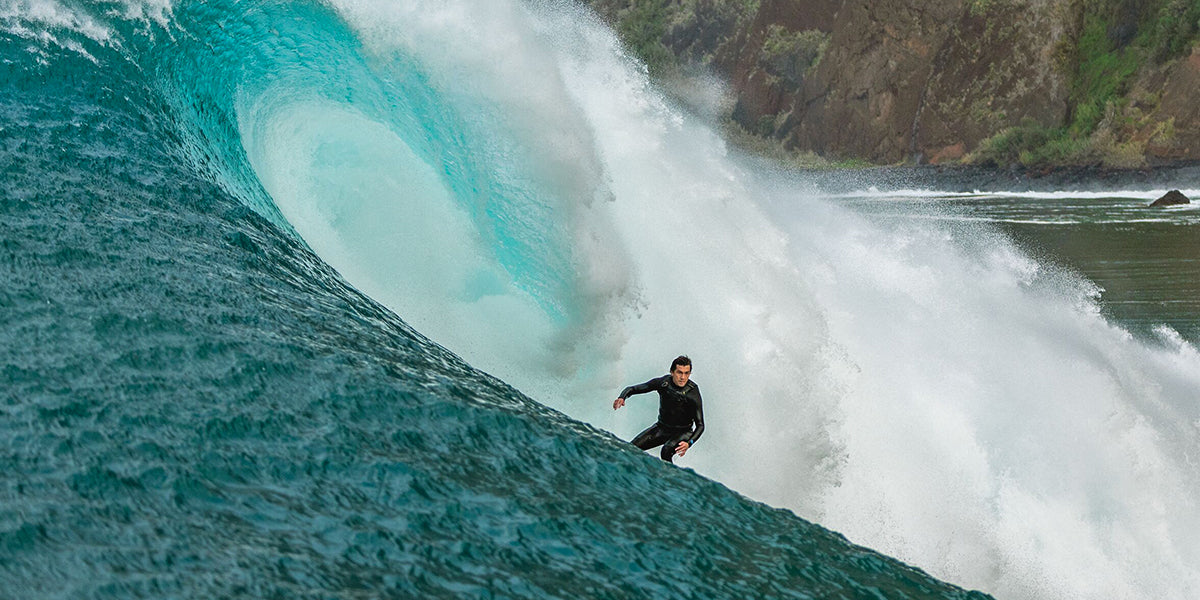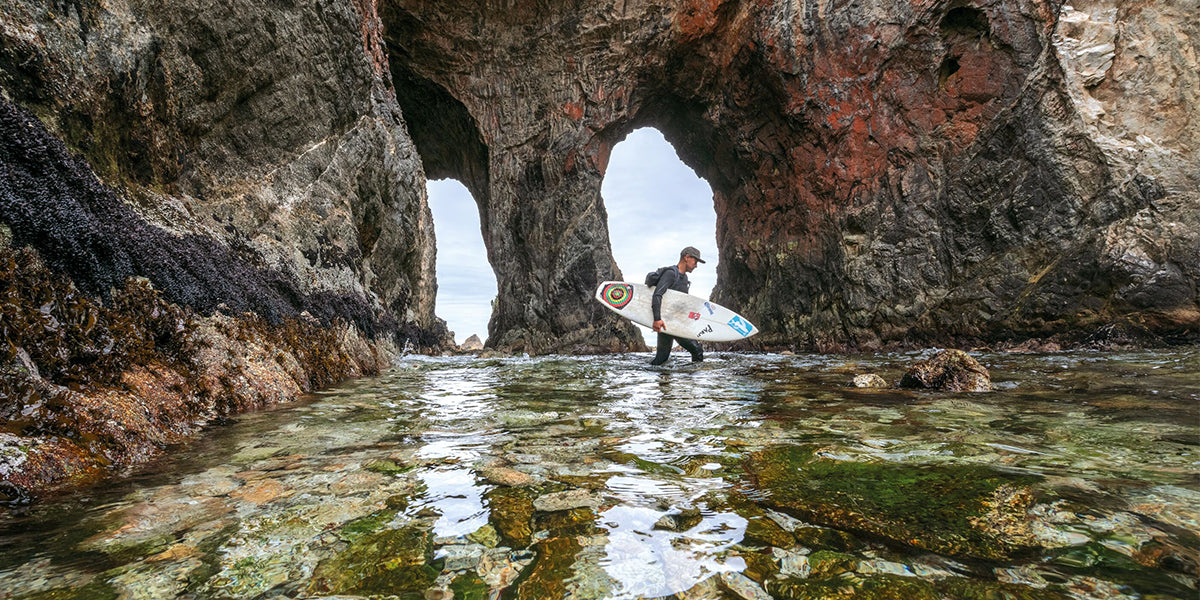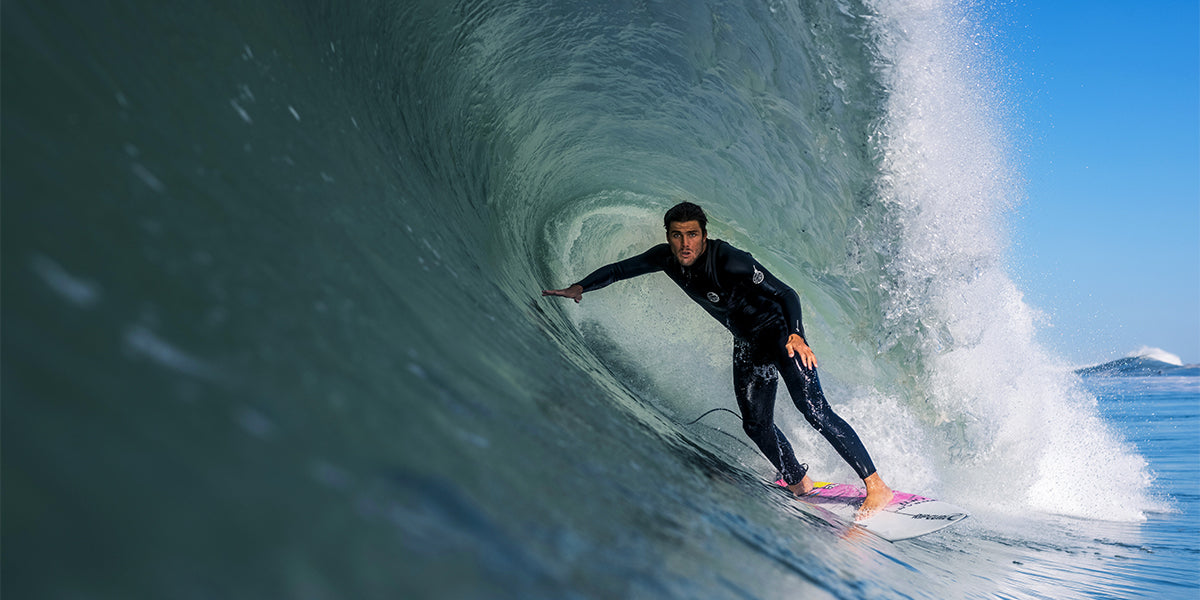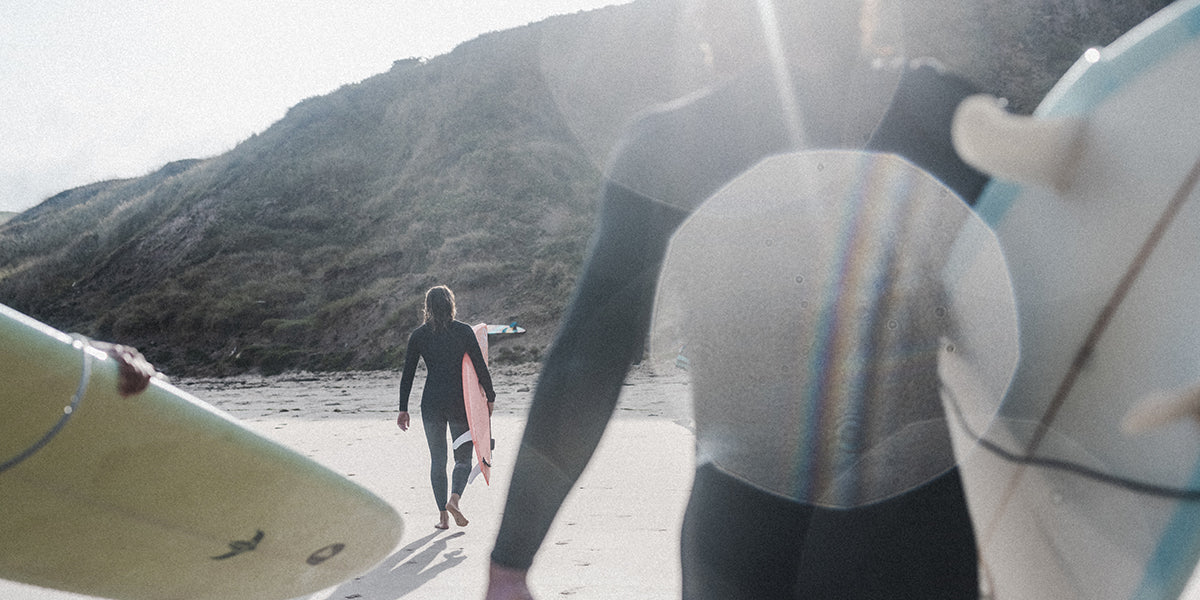The world of water sports is constantly evolving, with new wetsuits offering ever-better performance thanks to the use of different raw materials. If the neoprene has long reigned supreme, today other alternatives such as the Yulex and the limestone are making their mark on the market. What are the specific characteristics of these different materials? Let's delve into their world to better understand their properties, uses and ecological benefits.
The essential neoprene: an industry standard
Neoprene is a synthetic polymer developed in the 1930s. Prized in the manufacture of wetsuits for diving and surfing, this material is used for its thermal insulation properties, flexibility and durability. Made from synthetic rubber, neoprene offers better water resistance than natural rubber. However, traditional neoprene production has ecological drawbacks. It relies heavily on oil, a non-renewable resource, and can generate waste and polluting emissions during the manufacturing process.
Benefits of neoprene
- Effective thermal insulation: Neoprene offers excellent thermal insulation, allowing surfers to stay warm in cold waters, extending their practice time.
- Flexibility: Neoprene is naturally soft and elastic, giving surfers great freedom of movement. This allows for fluid, comfortable movement in the water.
- Water resistance: Due to its tight cell structure, neoprene is inherently water-resistant, helping to keep surfers dry and comfortable during their session.
- Durability: Neoprene is generally durable and abrasion-resistant, enabling it to withstand the rigors of surfing and other aquatic activities for long periods.
Disadvantages of neoprene
- Environmental impact: The manufacturing process for traditional neoprene relies on oil, a non-renewable resource, and can generate waste and polluting emissions. This raises concerns about its impact on the environment.
- Allergy potential: Some people may be sensitive or allergic to neoprene, which can lead to skin reactions or irritation when wearing neoprene wetsuits.
- Heat loss in wet conditions: Although neoprene is water-resistant, it can lose some of its insulating power when wet, which can make you feel colder, especially in windy conditions.
Meet Yulex: the ecological revolution
In the surfing world, where connection with nature is essential, a new ecological revolution is underway: the emergence of Yulex. This alternative to traditional neoprene promises to change the face of wetsuit manufacture by offering a more environmentally-friendly solution. Yulex is an innovative material made from rubber trees. Unlike neoprene, which depends on oil, Yulex uses a renewable, biodegradable resource. What's more, Yulex production requires less water and generates fewer carbon emissions than traditional neoprene. But Yulex's real revolution lies in its ability to deliver performance similar to, or even superior to, that of neoprene. Wetsuits made with Yulex offer effective thermal insulation, exceptional flexibility and outstanding durability. Surfers can therefore enjoy a high-quality surfing experience while reducing their impact on the environment.
 Advantages of Yulex
Advantages of Yulex
- Environmentally-friendly: Yulex is made from natural rubber, a renewable resource, which reduces its environmental impact compared with petroleum-derived neoprene.
- Effective thermal insulation: Yulex offers thermal insulation similar to that of traditional neoprene, enabling surfers to stay warm in cold water.
- Flexibility and comfort: Yulex wetsuits are renowned for their flexibility and comfort, offering surfers great freedom of movement.
- Water resistance: Like neoprene, Yulex is naturally water-resistant, helping to keep surfers dry and comfortable during their session.
Yulex disadvantages
- Cost: Yulex wetsuits can be more expensive than traditional neoprene ones due to the more complex manufacturing process and materials used.
- Limited availability: Yulex may not be as widely available as traditional neoprene, which may limit options for surfers looking for wetsuits in certain price ranges or specific styles.
- Adaptation required: Surfers used to traditional neoprene may need time to adapt when switching to Yulex wetsuits, due to the different feel and characteristics of this material.
In terms of performance, Yulex wetsuits are no match for neoprene, and offer a competitive alternative for eco-conscious surfers.
Some brands using Yulex
Patagonia : Iconic brand of outdoor and water sports clothing. They were among the first to adopt Yulex in their wetsuits, highlighting their commitment to sustainability and environmental protection.
Matuse: A brand focused on performance and innovation in the wetsuit industry. They have integrated Yulex into their wetsuits to offer an environmentally-friendly alternative while maintaining the high-level performance expected by surfers.
Picture Organic Clothing French brand offering a range of sports and outdoor clothing, including wetsuits. They are committed to using sustainable materials, including Yulex, in their products to reduce their environmental footprint.
Vissla: California-based surf brand that strives to create innovative and sustainable products for surfers worldwide. They have developed Yulex wetsuits as part of their commitment to sustainability and ocean protection.
Greenlines: Brand specializing in eco-friendly wetsuits. They focus on the use of sustainable and environmentally-friendly materials, such as Yulex, to manufacture their products.
Limestone as an alternative - The impressive Limestone
A significant advance in the wetsuit industry is the introduction of limestone-based neoprene. This innovation offers a more environmentally-friendly alternative, as it is produced from limestone, an abundant and easily accessible resource.

Advantages of limestone
- Ecological:Its manufacture from limestone reduces dependence on fossil fuels and helps cut carbon emissions associated with oil extraction and processing. What's more, the limestone neoprene production process requires less water than traditional neoprene.
- Effective thermal insulation: Limestone neoprene offers thermal insulation comparable to that of traditional neoprene, allowing surfers to stay warm in cold waters.
- Flexibility and comfort: Limestone neoprene wetsuits are renowned for their flexibility and comfort.
- Water resistance: Like traditional neoprene, limestone neoprene is naturally water-resistant.
- Durability: An added benefit of limestone neoprene is its greater resistance to UV rays than traditional neoprene. This feature helps extend the useful life of the wetsuit by reducing the harmful effects of sun exposure.
Disadvantages of limestone
- Cost: Surf suits made from limestone neoprene can be more expensive than those made from traditional neoprene, due to the potentially higher cost of materials and the manufacturing process.
- Limited availability: As with Yulex, limestone neoprene may not be as widely available as traditional neoprene, which may limit options for surfers.
- Sensitivity: Some people may be sensitive or allergic to limestone neoprene, as to traditional neoprene, which may cause skin reactions or irritation in some users.

Some brands that use Limestone
Xcel: A brand well known in the surfing world for its high-quality wetsuits. They use limestone neoprene in many of their wetsuit models, highlighting its advantages in terms of durability and performance.
Vissla: They also use limestone neoprene in some of their wetsuits to offer surfers an environmentally-friendly alternative.
O'Neill: One of the oldest and most respected brands in the surf industry. They offer a range of wetsuits made from limestone neoprene, providing top-level performance and enhanced durability.
Quiksilver: Iconic surf brand that incorporates limestone neoprene into some of their wetsuit models. They emphasize the environmental benefits of this material while maintaining high standards of quality and performance.
Rip Curl International surf brand known for its innovative, high-quality products. They have also adopted limestone neoprene in some of their wetsuit models, offering surfers a more environmentally friendly option.
Performance comparison: neoprene, Yulex and limestone
The question remains: which material offers the best performance for aquatic athletes? While neoprene remains popular for its flexibility and insulation, Yulex stands out for its durability and ecological qualities, while limestone excels in lightness and UV resistance.

Cost analysis
Cost remains a determining factor in consumer choice. Historically, neoprene has been the most affordable, but the price of eco-friendly alternatives such as Yulex and limestone tends to fall as technologies improve and demand increases.
User preferences
Finally, the choice between these materials may also depend on personal preferences and values. Environmentally conscious surfers might opt for Yulex or limestone, despite the higher initial cost.
The future of materials in water sports

As technology advances and environmental impacts become better understood, it seems inevitable that new materials will continue to appear on the market, offering consumers more choice. This scrutiny of available materials raises a central question about the future impact of our choices on marine ecosystems. In the meantime, every user can play a key role in ensuring that sport remains a source of joy without compromising our planet.



























